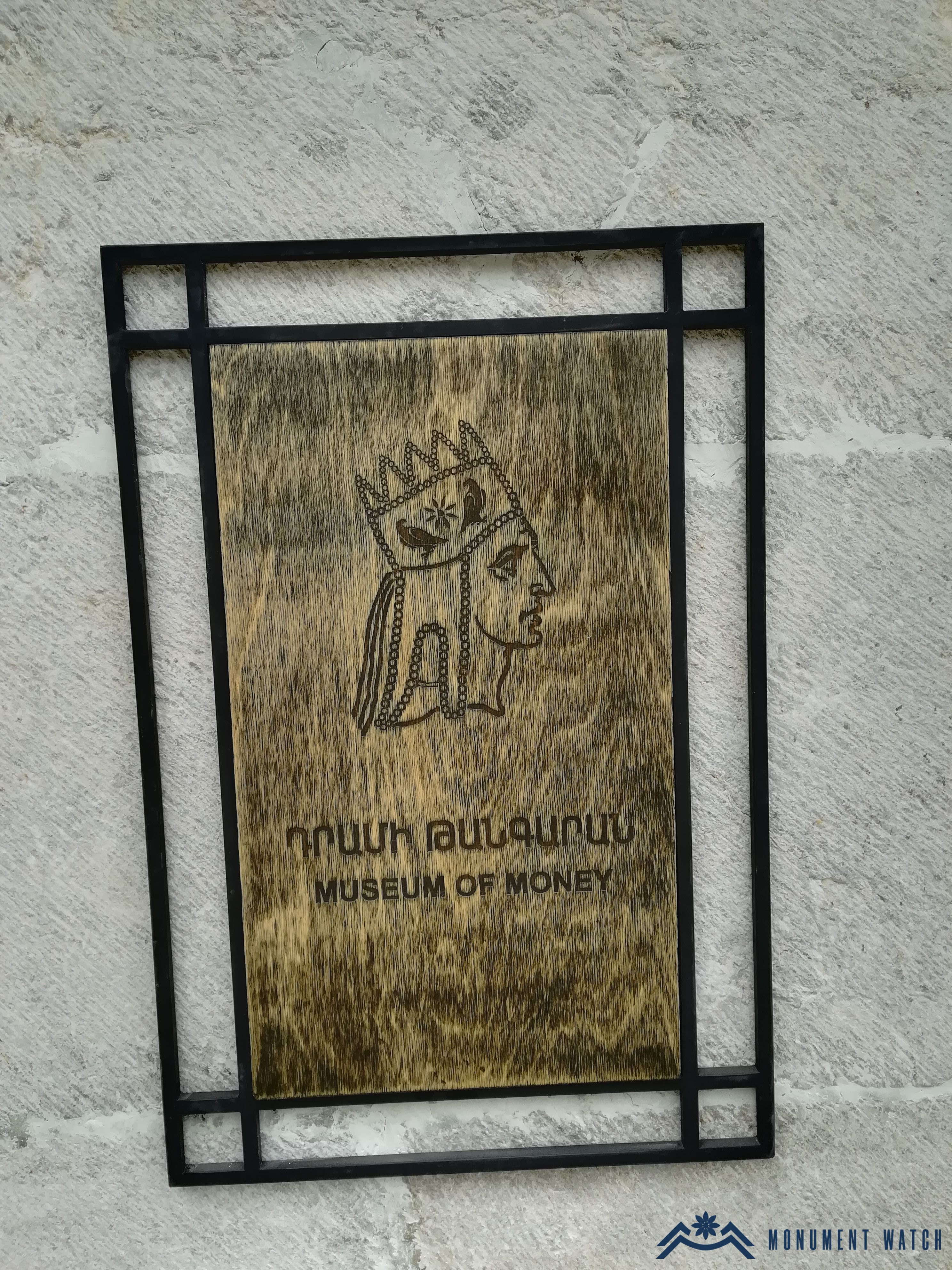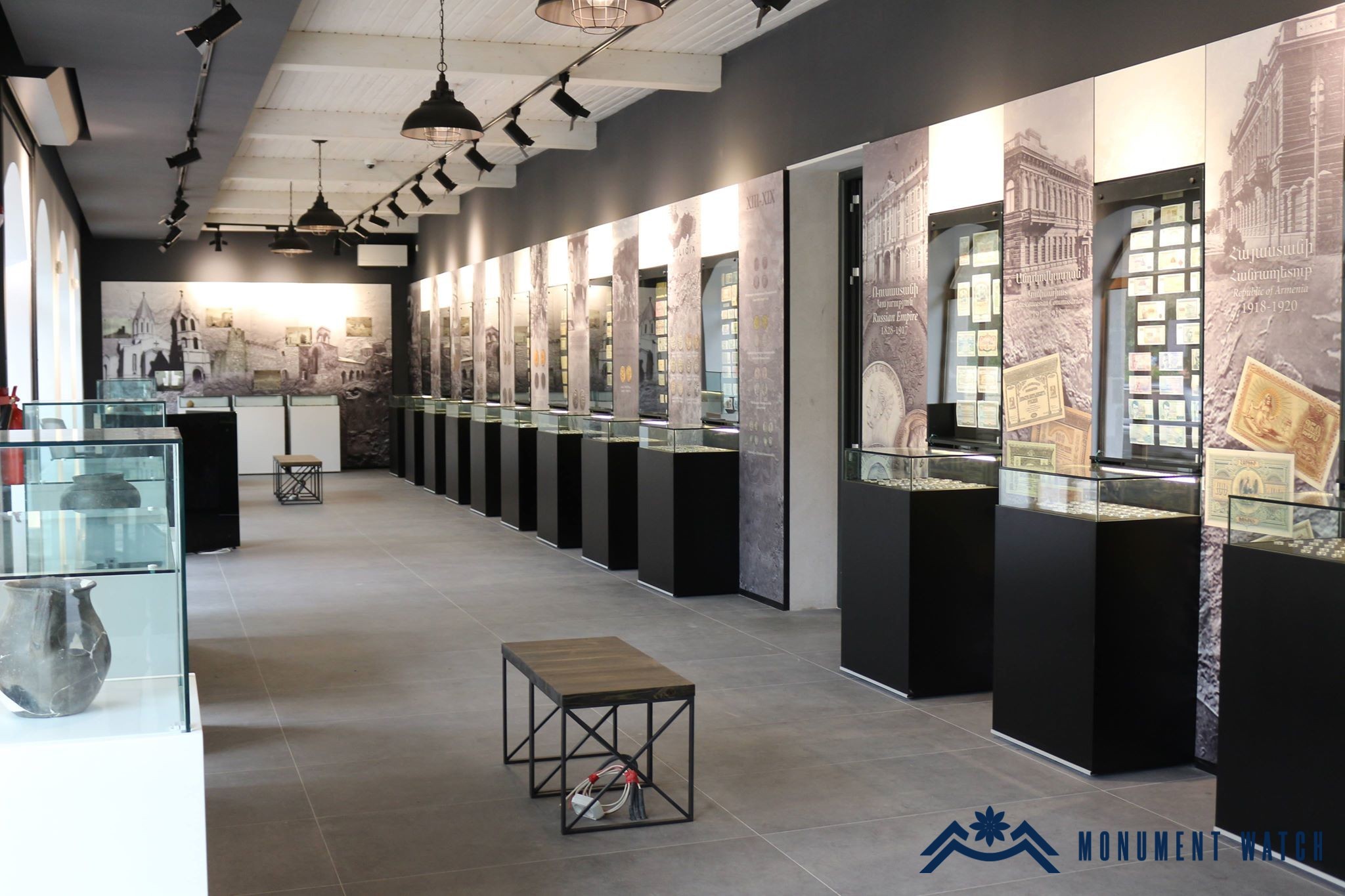
The Armenian Dram Museum
History
The Armenian Dram Museum was located in the city of Shushi at 24/1 Ghazanchetsots Street (Figure 1). The museum opened to the public on May 9, 2018, and was privately owned by the Central Bank of the Republic of Armenia.
Since 2020, the city of Shushi has been under Azerbaijani control. Consequently, the museum is also currently under Azerbaijani jurisdiction.
The collection
The museum was one of the exhibition centers operated by the Central Bank of the Republic of Armenia. It featured a single main exhibition hall (Fig. 2). The collection showcased various coins and banknotes issued and circulated throughout the territory of historical Armenia. Exhibits included currencies from the ancient Kingdom of Sophene, coins from the Artaxiad dynasty-particularly those minted under Tigranes the Great and Artavasdes II-artifacts from the period of Cilician Armenia, and coins and banknotes from the Russian Empire and the Soviet Union (Figs 3-6).
The museum dedicated a special section to Artsakh, showcasing coins excavated from the ancient city of Tigranakert and silver coins minted in Shushi during the late 18th and early 19th centuries. The museum's collection was rich in examples of banknotes from the First Republic of Armenia and the Armenian Soviet Socialist Republic, as well as coins issued by the Transcaucasian Socialist Federative Soviet Republic, the Soviet Union, and the Republic of Armenia. Particularly significant were commemorative coins dedicated to Artsakh, issued by the Central Bank of the Republic of Armenia over various years.
The museum exhibited more than 650 coins and banknotes, the oldest being a silver coin minted during the reign of Alexander the Great. Discovered within the territory of Armenia, this coin dates back to the late 4th century BC.
The museum's exhibition of Armenian drams was enriched by archaeological materials excavated from various regions of Artsakh, notably shell artifacts.
Furthermore, the museum showcased printing tools, including commemorative coin dies and banknote printing equipment, which provided visitors with insights into the processes involved in the production of stamps, coins, and banknotes.
The activity of the museum before the war
The Shushi Armenian Dram Museum was the last museum to open in Artsakh. Despite its relatively recent establishment, it quickly became a popular attraction for both the citizens of Artsakh and visiting tourists.
The condition after the war
According to an interview with the museum's director, Vruyr Hovhannisyan, published by the Hetk news agency, most of the museum's valuable exhibits were evacuated during the critical days of the war. However, many of the replica items remained on site. The Shushi Armenian Dram Museum, which represented the rich history of Armenian currency circulation, thus retained some of its artifacts. Nevertheless, videos that surfaced on the internet after the war show Azerbaijani soldiers walking through the museum's exhibition hall, where all the windows are shattered and the hall stands empty. The current condition of the remaining items in the museum is unknown.
The museum and international law regulations
As with any cultural property, the international legal-legislative basis for the protection of museums and collections is the 1954 Hague Convention for the Protection of Cultural Property in the Event of Armed Conflict and its two protocols (1954 and 1999). According to Article 4 of the 1954 Hague Convention, any acts of vandalism, theft, robbery, misappropriation, hostilities, and reprisals against cultural heritage are prohibited. Furthermore, according to the first Hague Protocol of 1954, it is forbidden to destroy cultural or spiritual values in occupied territories. The Second Hague Protocol of 1999 reaffirms this requirement and classifies such acts as international crimes under Article 15. The destruction of cultural values is also prohibited by four international conventions and protocols on the protection of war victims, the laws and customs of war established in the Geneva Conventions of August 12, 1949, as well as relevant UN resolutions and human rights treaties.
Bibliography
- Shushi's Dram Museum represented the rich history of the historical circulation of Armenian money. -https://hetq.am/hy/article/164544, (published: 24.02.2024)





